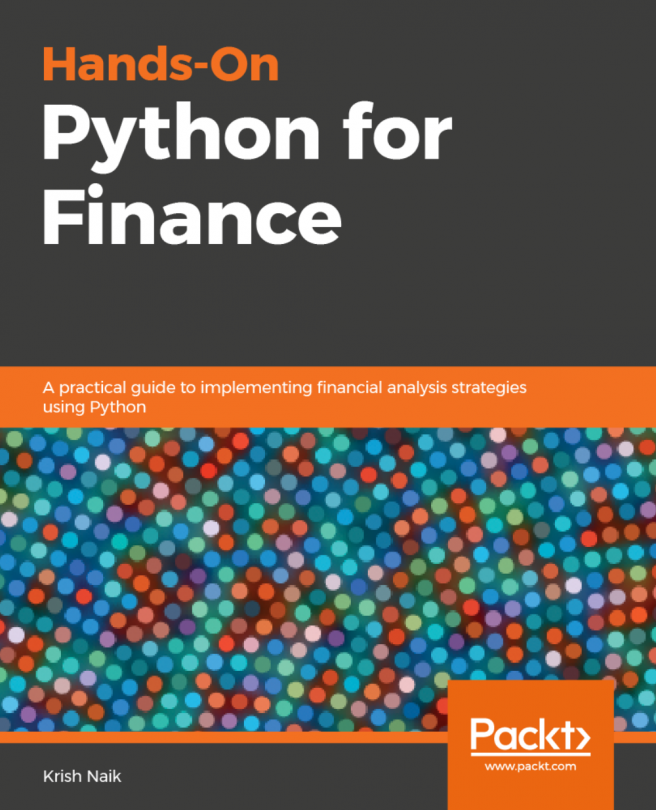Data output
The simplest example is given here:
>>>f=open("c:/temp/out.txt","w")
>>>x="This is great"
>>>f.write(x)
>>>f.close()For the next example, we download historical stock price data first, then write data to an output file:
import re
from matplotlib.finance import quotes_historical_yahoo_ochl
ticker='dell'
outfile=open("c:/temp/dell.txt","w")
begdate=(2013,1,1)
enddate=(2016,11,9)
p=quotes_historical_yahoo_ochl
(ticker,begdate,enddate,asobject=True,adjusted=True)
outfile.write(str(p))
outfile.close()To retrieve the file, we have the following code:
>>>infile=open("c:/temp/dell.txt","r")
>>>x=infile.read()One issue is that the preceding saved text file contains many unnecessary characters, such as [ and]. We could apply a substitution function called sub() contained in the Python module;see the simplest example given here:
>>> import re
>>>re.sub("a","9","abc")
>>>
'9bc'
>>>In the preceding example, we will replace the letter a with9. Interested readers could try the following two lines of code for the preceding program:
p2= re.sub('[\(\)\{\}\.<>a-zA-Z]','', p)
outfile.write(p2)It is a good idea to generate Python datasets with an extension of .pickle since we can retrieve such data quite efficiently. The following is the complete Python code to generate ffMonthly.pickle. Here, we show how to download price data and then estimate returns:
import numpy as np
import pandas as pd
file=open("c:/temp/ffMonthly.txt","r")
data=file.readlines()
f=[]
index=[]
for i in range(1,np.size(data)):
t=data[i].split()
index.append(int(t[0]))
for j in range(1,5):
k=float(t[j])
f.append(k/100)
n=len(f)
f1=np.reshape(f,[n/4,4])
ff=pd.DataFrame(f1,index=index,columns=['Mkt_Rf','SMB','HML','Rf'])
ff.to_pickle("c:/temp/ffMonthly.pickle")









































































